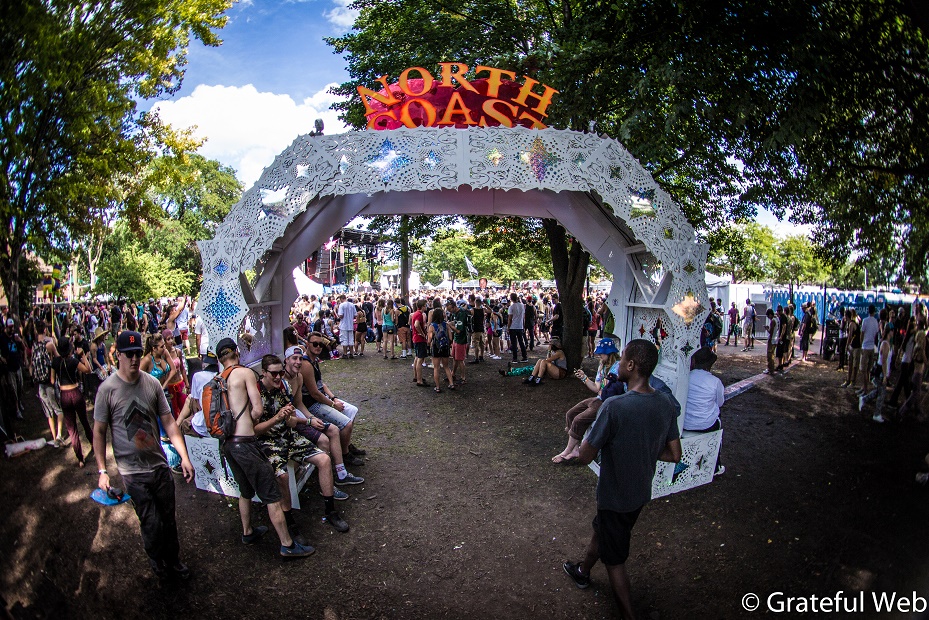It's the end of summer. Labor Day weekend – arguably one of the best times of the year to be a Chicago resident. The de facto end to summer is a time that Chicagoans tend to embrace, as a sort of reminder that we do have a bit of time before the tundra-like conditions of winder arrive mere months (or, gulp, weeks) from now. It makes perfect sense, then, to use this time to hold an eclectic music festival that hosts bands and artists ranging from funk to EDM and from rock to hip-hop.
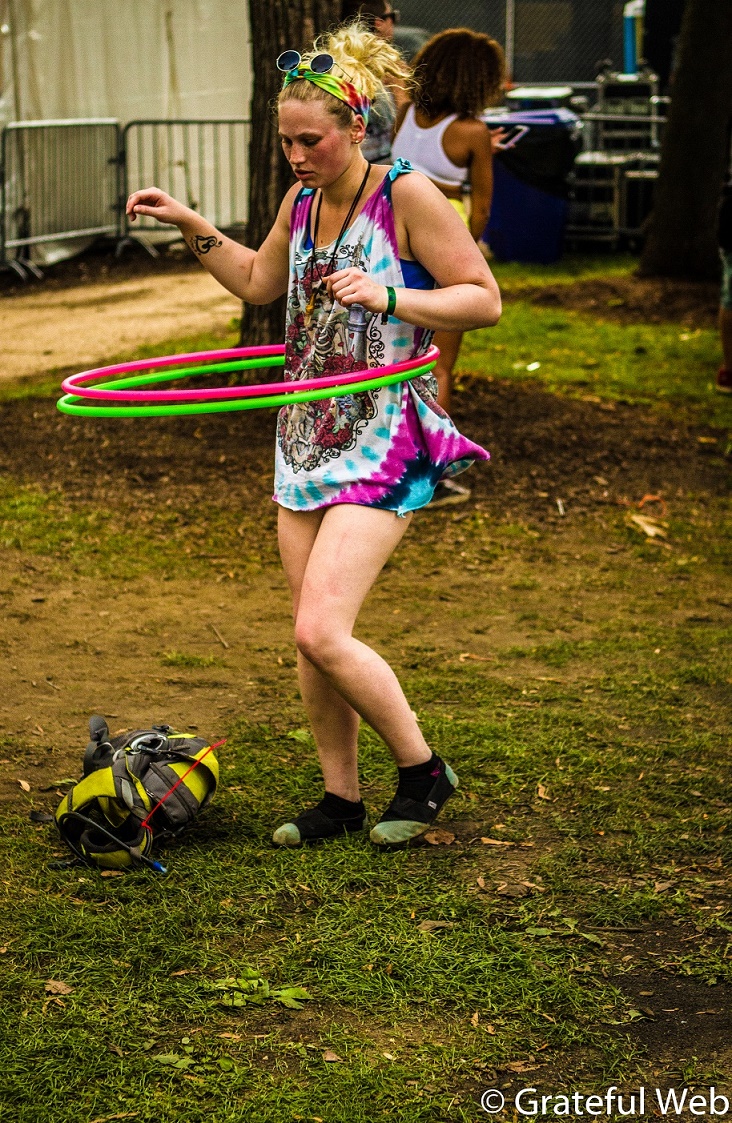 Indeed, NCMF runs the gamut to make sure fans of all types can get one last festival in before they're stuck digging their cars out of their parking spots or trudging through six inches of the white stuff on their way to the nearest 'L' stop. And perhaps the very nature of sharing a sense of 'last fling' with the summer was what cultivated a tremendously friendly and cordial festival atmosphere among the attendees. And although this is an urban festival – which means, of course, that camping and getting away from the hustle-bustle isn't part of the deal – the mood of the weekend was very uplifting yet relaxing, and it made for an excellent way to spend the holiday weekend.
Indeed, NCMF runs the gamut to make sure fans of all types can get one last festival in before they're stuck digging their cars out of their parking spots or trudging through six inches of the white stuff on their way to the nearest 'L' stop. And perhaps the very nature of sharing a sense of 'last fling' with the summer was what cultivated a tremendously friendly and cordial festival atmosphere among the attendees. And although this is an urban festival – which means, of course, that camping and getting away from the hustle-bustle isn't part of the deal – the mood of the weekend was very uplifting yet relaxing, and it made for an excellent way to spend the holiday weekend.
After arriving on Friday at the festival grounds (located in Chicago's Near West Side community), my first task was to locate the stages. Cleverly named after local area codes, the five stages – in order of biggest to smallest – were the 312 Stage, the 773 Stage, the 630 Stage, the 847 Stage, and the 708 Stage. My first stop was at the 708 Stage and checked out an EDM duo known as Kyral x Banko. Now, I'll preface this by admitting I know very little about EDM and its brethren. It just generally falls outside my own personal purview. That being said, I feel as though I'm a fairly diplomatic and open-minded music listener, and I can't help but indulge an act that has the tent packed with engaged listeners. And they're no strangers to the festival scene, either, having played Summer Camp this past May. Despite my own limited vocabulary regarding EDM, dubstep and the like, I was thoroughly impressed at this act's ability to keep their crowd in it.
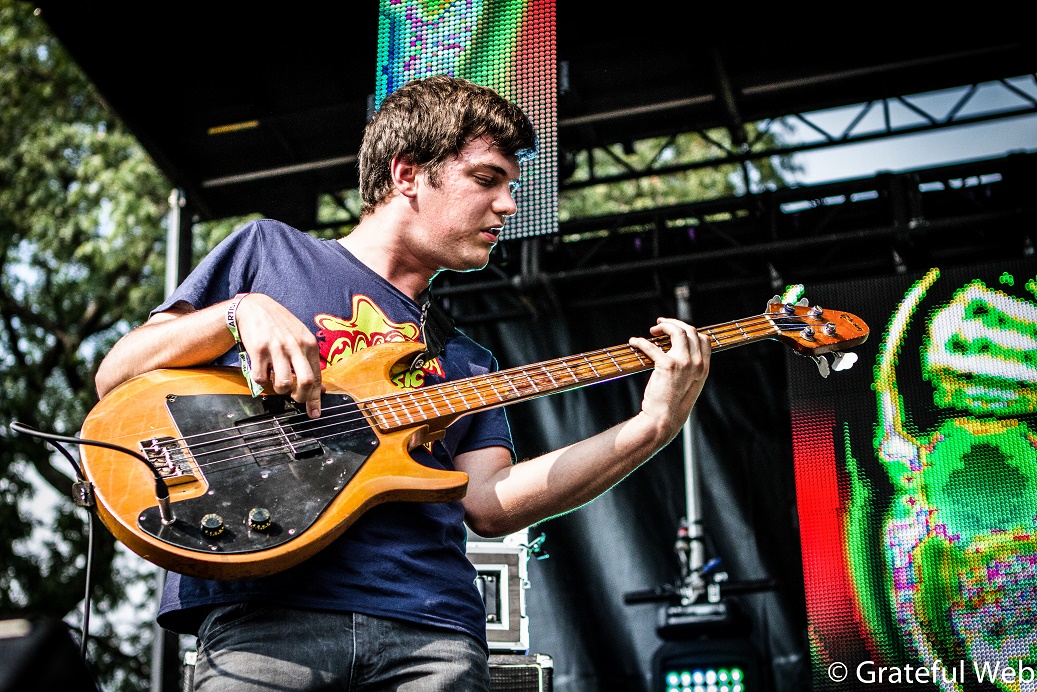 But nevertheless, as festivals go, you just sometimes have to split your attention to two stages. It's either miss all of one act you want to see or see part of two acts you want to see. Much as I'm inclined to enjoy a sampler platter any single item from the appetizer menu, I decided the latter option was the better one. I moseyed over to the 847 Stage to check out BadBadNotGood, a group I was excited to see as I'd heard and read about their very tasteful, modern jazz-fusion sound. They did not disappoint. The trio, based in Toronto and consisting of drums, bass and keys, threw down a set that offered some of the the most innovative material of the weekend. Unlike the jazz-fusion of the 1970s, BadBadNotGood's material has had about three decades of hip-hop rhythms and sensibilities to draw from. Yet, the spirit and energy of 1970s jazz-fusion (which I love) is embedded into their sound. Bassist Chester Hansen was absolutely on the mark and perhaps represented the lead voice for the group, fearlessly venturing in the risky world of bass solos (when appropriate) and navigating that world with ease while drummer Alexander Sowinski laid down the foundation and keyboardist Matthew Tavares added fascinating textures that glued everything together. Fans of Weather Report and Return to Forever, take note: this is what jazz-fusion sounds like in 2014, and that's a very good thing.
But nevertheless, as festivals go, you just sometimes have to split your attention to two stages. It's either miss all of one act you want to see or see part of two acts you want to see. Much as I'm inclined to enjoy a sampler platter any single item from the appetizer menu, I decided the latter option was the better one. I moseyed over to the 847 Stage to check out BadBadNotGood, a group I was excited to see as I'd heard and read about their very tasteful, modern jazz-fusion sound. They did not disappoint. The trio, based in Toronto and consisting of drums, bass and keys, threw down a set that offered some of the the most innovative material of the weekend. Unlike the jazz-fusion of the 1970s, BadBadNotGood's material has had about three decades of hip-hop rhythms and sensibilities to draw from. Yet, the spirit and energy of 1970s jazz-fusion (which I love) is embedded into their sound. Bassist Chester Hansen was absolutely on the mark and perhaps represented the lead voice for the group, fearlessly venturing in the risky world of bass solos (when appropriate) and navigating that world with ease while drummer Alexander Sowinski laid down the foundation and keyboardist Matthew Tavares added fascinating textures that glued everything together. Fans of Weather Report and Return to Forever, take note: this is what jazz-fusion sounds like in 2014, and that's a very good thing.
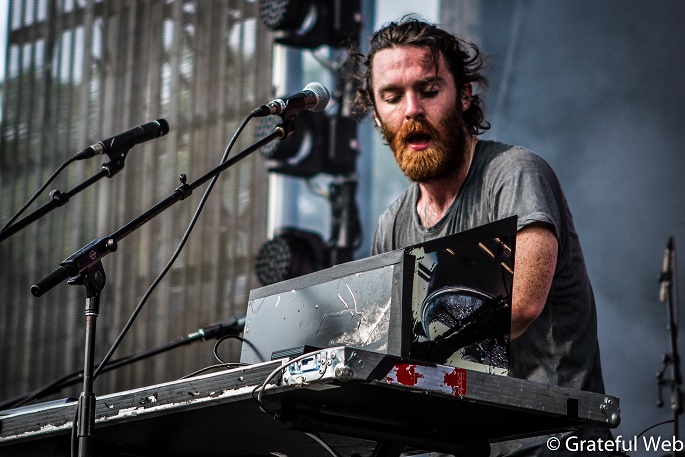 After BadBadNotGood, 4:30 pm rolled around, and I found myself watching Chet Faker at the 312 Stage, which served as the main stage for the weekend. Faker, who broke a number of years back with his slow, subdued cover of Blackstreet's “No Diggity”, offers an ethereal, song-oriented electronic sound that was easy to chill to. I hadn't heard much of Faker's material previously, though I found myself drawn in to its simplistic sound that emphasized lyrics and melody in ways other electronic artists don't. In a very sincere and real way, Chet Faker brings a timeless element to a genre that often falls victim to time-stamped production styles and sounds.
After BadBadNotGood, 4:30 pm rolled around, and I found myself watching Chet Faker at the 312 Stage, which served as the main stage for the weekend. Faker, who broke a number of years back with his slow, subdued cover of Blackstreet's “No Diggity”, offers an ethereal, song-oriented electronic sound that was easy to chill to. I hadn't heard much of Faker's material previously, though I found myself drawn in to its simplistic sound that emphasized lyrics and melody in ways other electronic artists don't. In a very sincere and real way, Chet Faker brings a timeless element to a genre that often falls victim to time-stamped production styles and sounds.
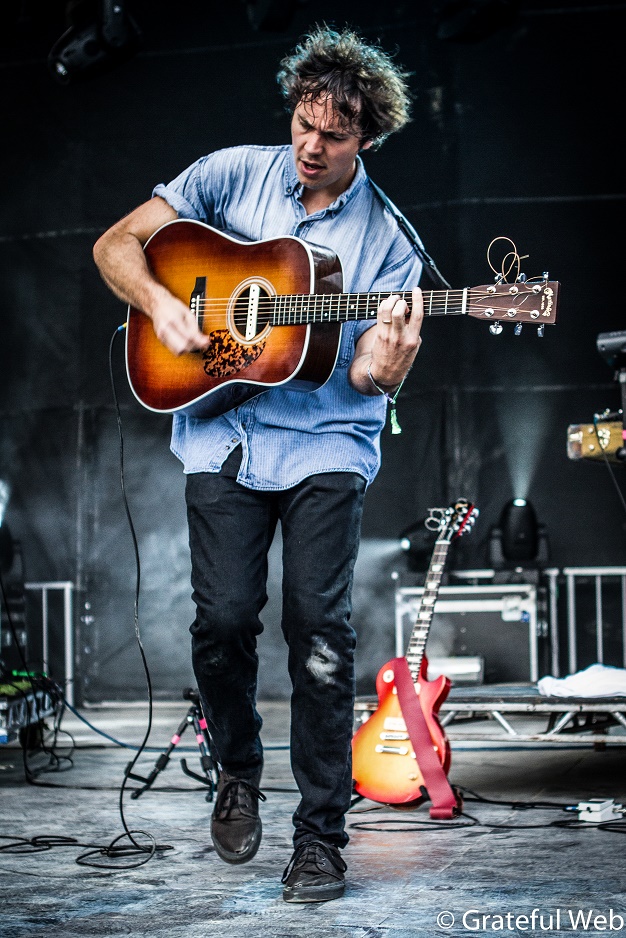 Moving over to the 773 Stage, Ernest Greene (aka Washed Out) began the early evening hours with his brand of starry-eyed synth pop. Backed with a touring band that included bass, drums, and guitar – with various synthesizers and keyboards at each station – Washed Out offered the audience a great way to get primed for the more subdued aspects of the festival. But perhaps their set served as an example of what can happen when you have a festival as diverse as this: Greene's loyalists and interested newbies looked on in awe, but a good bit of the rest of the attendees split off to other stages. In my opinion, the latter group sorely missed out.
Moving over to the 773 Stage, Ernest Greene (aka Washed Out) began the early evening hours with his brand of starry-eyed synth pop. Backed with a touring band that included bass, drums, and guitar – with various synthesizers and keyboards at each station – Washed Out offered the audience a great way to get primed for the more subdued aspects of the festival. But perhaps their set served as an example of what can happen when you have a festival as diverse as this: Greene's loyalists and interested newbies looked on in awe, but a good bit of the rest of the attendees split off to other stages. In my opinion, the latter group sorely missed out.
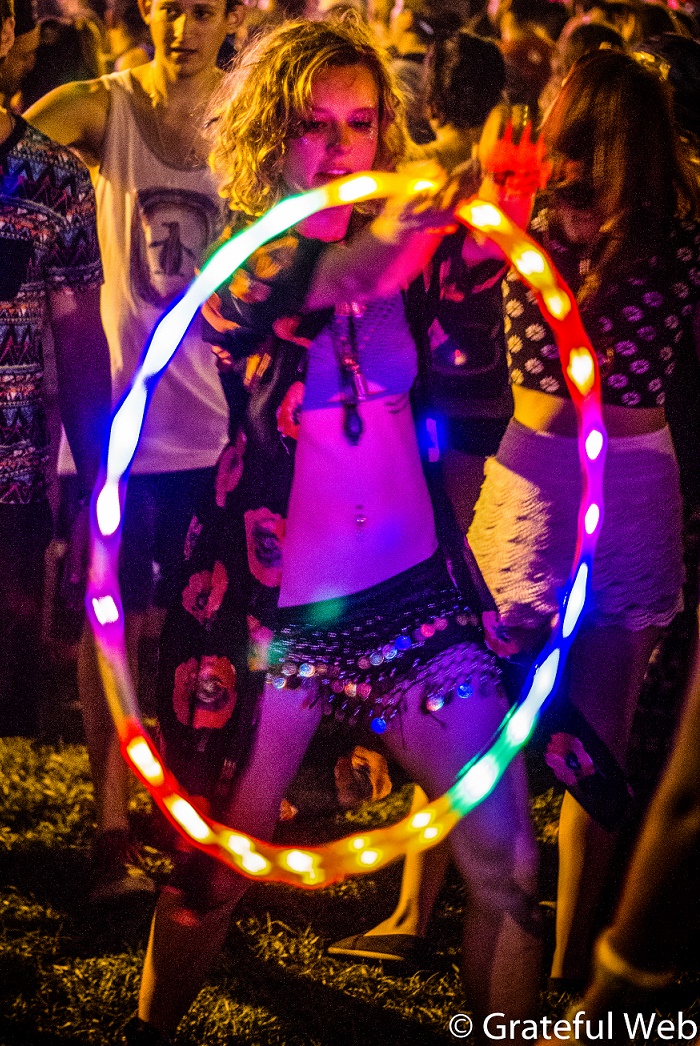 As the sun was going down on Chicago, the 847 Stage hosted a five-piece electronic progressive jazz-rock outfit known as Papadosio. Led by frontman Anthony Thogmartin, the quintet stormed through soundscape-like songs held together by the superb rhythm section of bassist Rob McConnell and drummer Mike Healy. Dual keyboards/synth stations shaped the sound, weaving genres ranging from jazz piano to electronica. On top of that lay Thogmartin's soft vocal approach, through which he delivered thoughtful, contemplative lyrics. As the sun completed its descent, Papadosio's stage was backlit with a bright visualizer, cycling through visual after visual as the silhouettes that were the band members played through light and fog-machine fog. This engaging visual experience definitely enhanced their set, but in no way did the band use it as a crutch.
As the sun was going down on Chicago, the 847 Stage hosted a five-piece electronic progressive jazz-rock outfit known as Papadosio. Led by frontman Anthony Thogmartin, the quintet stormed through soundscape-like songs held together by the superb rhythm section of bassist Rob McConnell and drummer Mike Healy. Dual keyboards/synth stations shaped the sound, weaving genres ranging from jazz piano to electronica. On top of that lay Thogmartin's soft vocal approach, through which he delivered thoughtful, contemplative lyrics. As the sun completed its descent, Papadosio's stage was backlit with a bright visualizer, cycling through visual after visual as the silhouettes that were the band members played through light and fog-machine fog. This engaging visual experience definitely enhanced their set, but in no way did the band use it as a crutch.
Friday's headliner was Bassnectar, and there were plenty of Bass Heads in attendance at this year's North Coast, as indicated by – at least at my estimate – they outnumbered all other bands in terms of a hypothetical “Who's Wearing Whose Shirt?” contest. As a newbie to a Bassnectar live experience, especially after he's been established for as long as he has, I wasn't quite sure what to expect from DJ Lorin Ashton. I'd listened a little bit here and there, and I wondered if anything I remembered enjoying from hearing his music those first few times would be represented in a live show. I particularly dig the samples of historical speeches, and that aspect definitely made its way into the show. The lighting experience was among the best I've ever seen (though still not as good as Phish's now-legendary lighting). This is considering that the stage-sharing nature of mid- to large-size festivals often means that an artist would have to scale back from the usual, often to the disappointment of the artists' most devoted and loyal fans. Reading the crowd, I didn't get the vibe that this was happening. The crowd appeared loyal, connected, despite Ashton not making himself all that visible. He was obscured behind his table or as a silhouette for 97% of the show from 100% of the vantage points I tried out (there were at least fifteen). Keep in mind that this was my first Bassnectar show, and I just can't honestly compare it to a single-bill performance. But in no way did “festival Bassnectar” seem to be inferior to “single-bill Bassnectar.”
.jpg) Saturday's festival experience started off busier, as more and more people who couldn't attend the previous day due to work were able to get going early. The experience on the grounds was much more laid back than the previous day for this reason. Live artists were in the thick of doing their thing, the Heineken vendors were busy, and the sun was once again beating down. Saturday also marked the second day that weather forecasters were ominously predicting rain, but (spoiler alert) it ended up being a completely dry weekend.
Saturday's festival experience started off busier, as more and more people who couldn't attend the previous day due to work were able to get going early. The experience on the grounds was much more laid back than the previous day for this reason. Live artists were in the thick of doing their thing, the Heineken vendors were busy, and the sun was once again beating down. Saturday also marked the second day that weather forecasters were ominously predicting rain, but (spoiler alert) it ended up being a completely dry weekend.
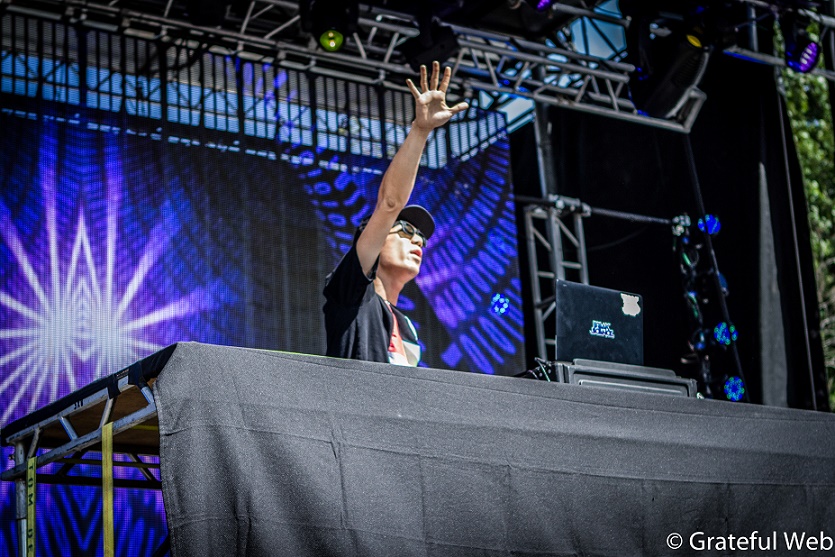 My day started with Break Science, an EDM duo from NYC. Led by DJ Borahm Lee and backed by drummer Adam Deitch (with both musicians brandishing keyboards), Break Science treated their crowd to an astonishingly energetic and visual set on the 312 Stage. And aside from the obvious crowd engagement, Break Science also had many loyal fans in attendance – you'd have to have had your eyes closed to miss seeing at least a dozen Break Science t-shirts among the crowd.
My day started with Break Science, an EDM duo from NYC. Led by DJ Borahm Lee and backed by drummer Adam Deitch (with both musicians brandishing keyboards), Break Science treated their crowd to an astonishingly energetic and visual set on the 312 Stage. And aside from the obvious crowd engagement, Break Science also had many loyal fans in attendance – you'd have to have had your eyes closed to miss seeing at least a dozen Break Science t-shirts among the crowd.
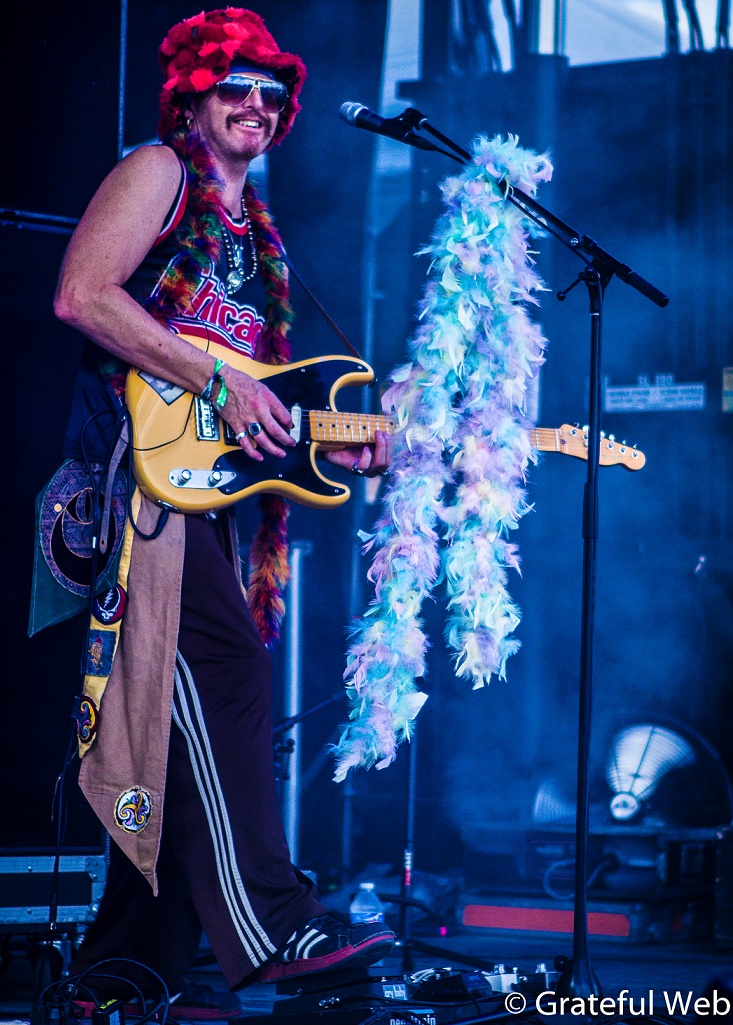 After Break Science, the festival featured the psychedelic electronic offerings of BoomBox, perhaps one of the most eclectic groups overall. The duo, consisting of singer-guitarist Zion Godchaux and producer Russ Randolph, mixed sounds of funk, soul, and groove-jazz with infectious beats. The group was also among the most entertaining to look at, with Godchaux dressed in a basketball jersey and feathery hat and Randolph sporting a top hat that would make the Mad Hatter jealous. Definitely worth the time spent.
After Break Science, the festival featured the psychedelic electronic offerings of BoomBox, perhaps one of the most eclectic groups overall. The duo, consisting of singer-guitarist Zion Godchaux and producer Russ Randolph, mixed sounds of funk, soul, and groove-jazz with infectious beats. The group was also among the most entertaining to look at, with Godchaux dressed in a basketball jersey and feathery hat and Randolph sporting a top hat that would make the Mad Hatter jealous. Definitely worth the time spent.
Moving back to the 312 Stage at 4:30, I caught perhaps one of the most anticipated acts of the festival: rapper Talib Kweli. After a few minutes of his DJ establishing beats and warming up the crowd, Kweli took the stage by storm. Now, I'm not particularly well-versed in hip-hop and rap, but my vocabulary is indeed growing. As such, I feel I'm not stretching at all when I tell you that Kweli is absolutely virtuosic at what he does. Engaging the crowd with unequaled fervor, extending his stage footing to any and all subwoofers, and calling to action anyone interested in spreading his message. And the reason he was so anticipated was that just a couple weeks ago, he went on air with CNN's Don Lemon and criticized CNN and the news media as a whole for their coverage of the tragic death of Michael Brown in Ferguson, Missouri. Many festival-goers were expecting him to be more fired up as a result, and that's exactly the Kweli they got. During his set, he called out two locales as “ground zero” - Ferguson and Chicago – and with regard to Chicago specifically, he mentioned that Chicago has been targeted by the media as an example of what is wrong with the country. Immediately thereafter, he urged festival-goers to be active in quelling this conception, and to get to work improving the quality of life in the Windy City. Given the difficulties facing Chicago and the rest of our country today, it's hard not to watch Kweli's set and deem it comparable in spirit to the protest music of the 1960s. This spirit is extremely necessary if we're going to cultivate the fortitude to take the long road toward improving our world. Personally, I'm inspired to do so, and Kweli's set helped galvanize that.
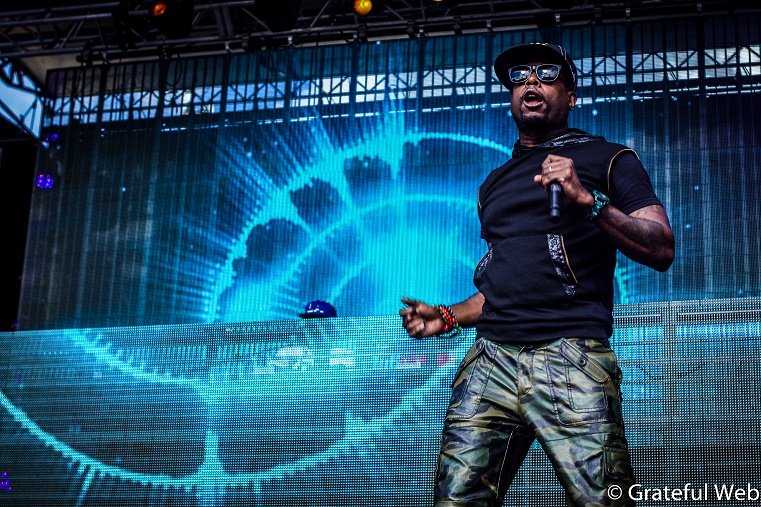 Moving to the 630 Stage – which I didn't make it to at all on Friday – I was extremely excited to catch Baltimore synth-pop four-piece Future Islands. Now, this band has been all abuzz since their Letterman performance of “Seasons (Waiting on You)” went crazy viral. Now, I'm not really one to jump the bandwagon on viral videos, so I was a few months late to the party, having watched the Letterman spot for the first time just a couple weeks back. And while I was certainly impressed by the energy displayed, it left me with a few questions. First, why does lead singer Samuel T. Herring growl lyrics seemingly at random over an otherwise smoothly polished composition? Secondly, a Letterman performance is fine and good, but how does that translate to an in-person live experience? Addressing those questions in reverse order, I got the sense that Future Islands' virtuosity lies in their consistency and fervency. The sun hadn't yet set on the 630 Stage, so the band had limited reliance on fancy lighting, but they were thoroughly captivating. One of the things that seems most deliberate about their live show is that the other three band members are essentially deadpan for the entire show, moving only enough to articulate notes on their instruments. This frees up Herring, who is a true lead singer in the sense that he does not play an instrument, to emote in an unparalleled visual fashion that's more than a bit theatrical in nature. I'm talking rhythmic dancing, grabbing for air, verging on tears and pounding on his own chest to the point of audibility through the vocal mic. Indeed, the “true lead singer” thing is very hard to pull off, and I could probably count on one hand the number of performers I feel do it well. Even now that I've added Herring to that list, I've probably got at least one if not two fingers left. Going back to my first question regarding the growling: this is not Tom Waits-style sustained, pitched growling, which I love. The sparsely selected moments of growling were textbook death metal vocal articulations, devoid of discernible pitch and something I'm not particularly keen on. And while the jury's still out in my mind if I can let those moments slide enough to call myself a fan of Future Islands, they have indeed earned my respect and I can offer a recommendation to anyone who's curious about the buzz behind them.
Moving to the 630 Stage – which I didn't make it to at all on Friday – I was extremely excited to catch Baltimore synth-pop four-piece Future Islands. Now, this band has been all abuzz since their Letterman performance of “Seasons (Waiting on You)” went crazy viral. Now, I'm not really one to jump the bandwagon on viral videos, so I was a few months late to the party, having watched the Letterman spot for the first time just a couple weeks back. And while I was certainly impressed by the energy displayed, it left me with a few questions. First, why does lead singer Samuel T. Herring growl lyrics seemingly at random over an otherwise smoothly polished composition? Secondly, a Letterman performance is fine and good, but how does that translate to an in-person live experience? Addressing those questions in reverse order, I got the sense that Future Islands' virtuosity lies in their consistency and fervency. The sun hadn't yet set on the 630 Stage, so the band had limited reliance on fancy lighting, but they were thoroughly captivating. One of the things that seems most deliberate about their live show is that the other three band members are essentially deadpan for the entire show, moving only enough to articulate notes on their instruments. This frees up Herring, who is a true lead singer in the sense that he does not play an instrument, to emote in an unparalleled visual fashion that's more than a bit theatrical in nature. I'm talking rhythmic dancing, grabbing for air, verging on tears and pounding on his own chest to the point of audibility through the vocal mic. Indeed, the “true lead singer” thing is very hard to pull off, and I could probably count on one hand the number of performers I feel do it well. Even now that I've added Herring to that list, I've probably got at least one if not two fingers left. Going back to my first question regarding the growling: this is not Tom Waits-style sustained, pitched growling, which I love. The sparsely selected moments of growling were textbook death metal vocal articulations, devoid of discernible pitch and something I'm not particularly keen on. And while the jury's still out in my mind if I can let those moments slide enough to call myself a fan of Future Islands, they have indeed earned my respect and I can offer a recommendation to anyone who's curious about the buzz behind them.
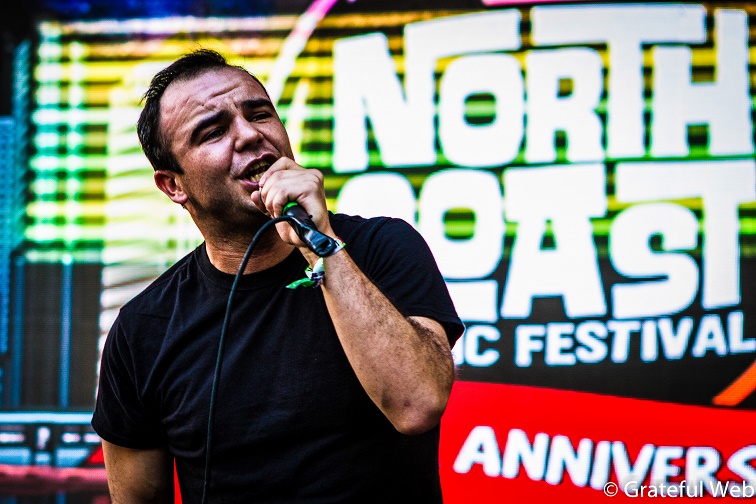 Back at the 312 Stage, dreamy, indie-electronic act Little Dragon got things going. Led by the charismatic Yukimi Nagano, the Swedish group offered one of the most anticipated and satisfying sets of the weekend. The crowd was in their element here, and if any act could be considered a microcosm of the festival as a whole, it would be Little Dragon. Blending elements of electronica, soul, acid jazz, indie-rock, and trip hop, Little Dragon established itself as perhaps the perfect overall fit for NCMF. Nagano's delicate vocal style and captivating stage presence played perfectly with her tight-as-hell backing band, consisting of drums, bass and two keyboards. Nagano herself added auxiliary percussion in a way that perfectly melded her stage presence with the band and accentuated the subtle, yet supremely tasteful downtempo rhythmic approach of the band.
Back at the 312 Stage, dreamy, indie-electronic act Little Dragon got things going. Led by the charismatic Yukimi Nagano, the Swedish group offered one of the most anticipated and satisfying sets of the weekend. The crowd was in their element here, and if any act could be considered a microcosm of the festival as a whole, it would be Little Dragon. Blending elements of electronica, soul, acid jazz, indie-rock, and trip hop, Little Dragon established itself as perhaps the perfect overall fit for NCMF. Nagano's delicate vocal style and captivating stage presence played perfectly with her tight-as-hell backing band, consisting of drums, bass and two keyboards. Nagano herself added auxiliary percussion in a way that perfectly melded her stage presence with the band and accentuated the subtle, yet supremely tasteful downtempo rhythmic approach of the band.
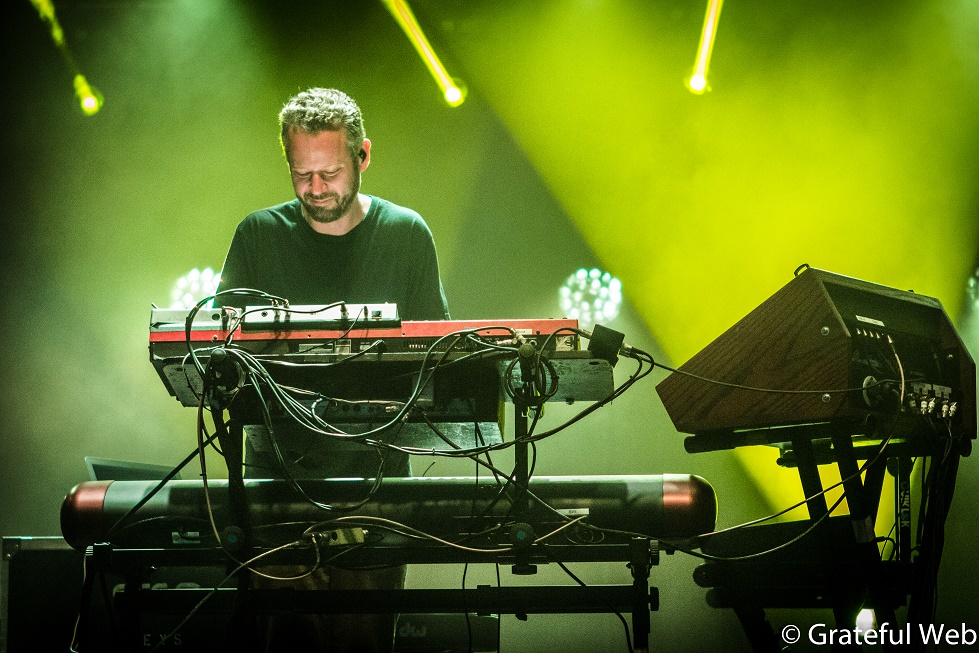 Right around sundown, the 773 Stage hosted its only billed headliner of the weekend: STS9. This was my first time seeing the instrumental act, and I can now see why they're so revered. Being an instrumental act, their success lies not in engaging lyrics or hummable melodies, but rather in unparalleled tightness and spectacular lighting. Having been giving one of the longest sets of the festival at an hour and a half (the only other one that long was Bassnectar's), I got the sense that I was getting a very respectable representation of what a single- or double-bill STS9 show might be like. Bassist and newest member Alana Rocklin was absolutely on fire Saturday (I am also a bassist, and I like to think I know what good bass playing sounds like), and she played as if she had been with them for years. Highlights of the show included “Scheme” into “What Is Love” and “Inspire Strikes Back”, which closed the set.
Right around sundown, the 773 Stage hosted its only billed headliner of the weekend: STS9. This was my first time seeing the instrumental act, and I can now see why they're so revered. Being an instrumental act, their success lies not in engaging lyrics or hummable melodies, but rather in unparalleled tightness and spectacular lighting. Having been giving one of the longest sets of the festival at an hour and a half (the only other one that long was Bassnectar's), I got the sense that I was getting a very respectable representation of what a single- or double-bill STS9 show might be like. Bassist and newest member Alana Rocklin was absolutely on fire Saturday (I am also a bassist, and I like to think I know what good bass playing sounds like), and she played as if she had been with them for years. Highlights of the show included “Scheme” into “What Is Love” and “Inspire Strikes Back”, which closed the set.
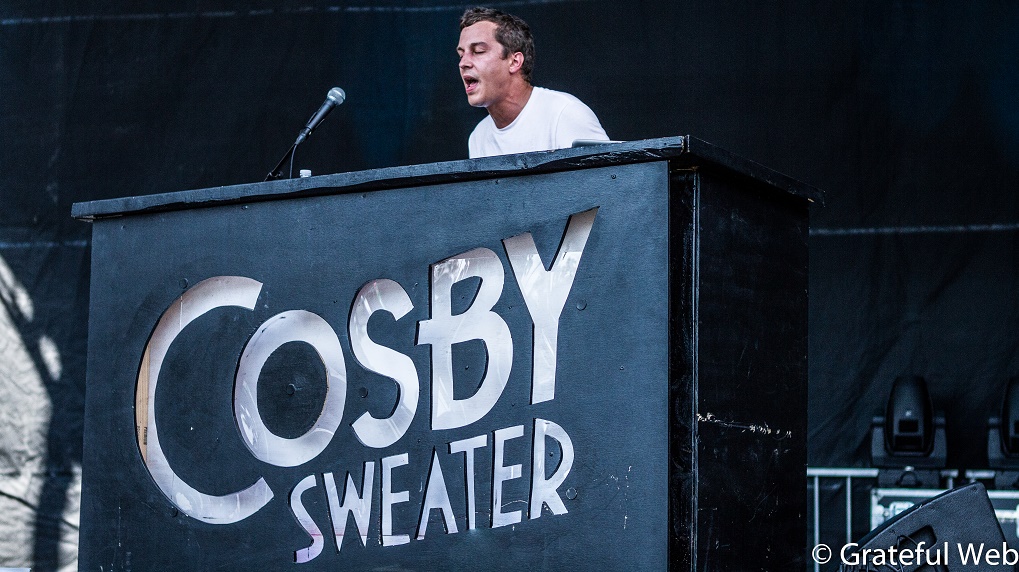 By the time Sunday rolled around, I knew I was in for the best day of the festival yet. Not a single rain forecast was on the books, and on tap for the day were some of the most exciting acts of the weekend, including Wild Belle, Dr. Dog and (no relation) Snoop Dogg. My day started off at the 773 Stage with Cosby Sweater, a jazz-electronic trio consisting of drums, saxophone and a mixing/DJ station. These guys were quite fun, not taking themselves painfully seriously, as indicated not only by their tongue-in-cheek band name, but also by their equally tongue-in-cheek song titles, namely “The Huxtable Hustle”. Saxophonist Nicholas Gerlach was very entertaining to watch, and the trio warmed up the early arrivers very nicely.
By the time Sunday rolled around, I knew I was in for the best day of the festival yet. Not a single rain forecast was on the books, and on tap for the day were some of the most exciting acts of the weekend, including Wild Belle, Dr. Dog and (no relation) Snoop Dogg. My day started off at the 773 Stage with Cosby Sweater, a jazz-electronic trio consisting of drums, saxophone and a mixing/DJ station. These guys were quite fun, not taking themselves painfully seriously, as indicated not only by their tongue-in-cheek band name, but also by their equally tongue-in-cheek song titles, namely “The Huxtable Hustle”. Saxophonist Nicholas Gerlach was very entertaining to watch, and the trio warmed up the early arrivers very nicely.
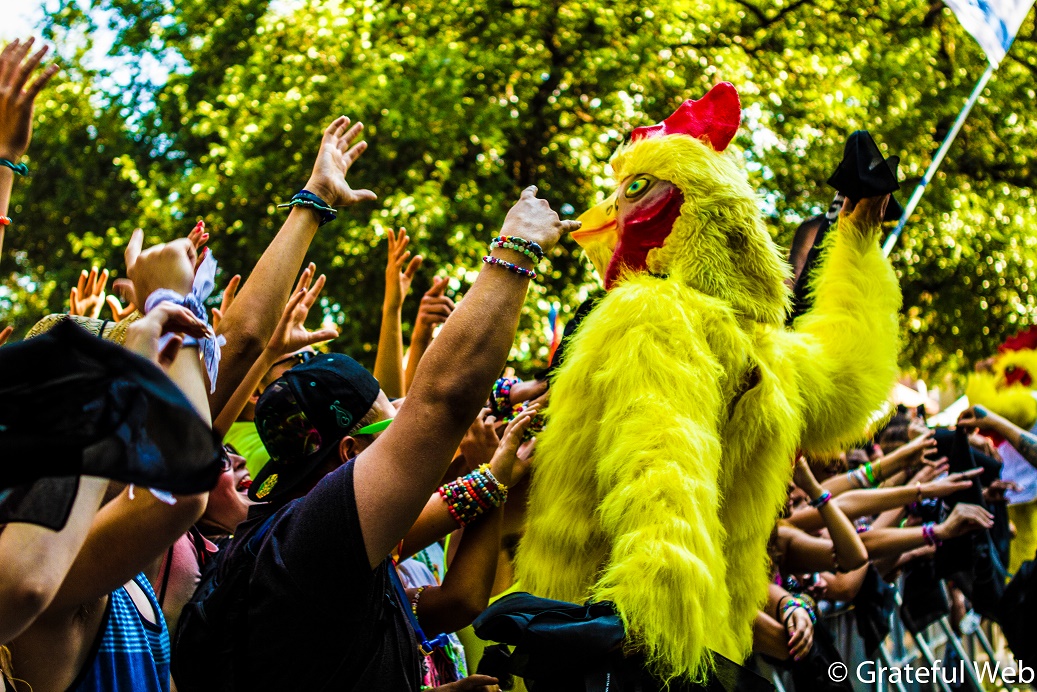 Over at the 630 Stage was a group that I absolutely just had to check out, based on name only: Porn and Chicken. These guys are less of a single band and more of a collective of DJs that runs a themed party every Monday night in Chicago. Parties include free chicken wings and porn screenings, and this performance was, in effect, a promotional appearance for said parties. As you might expect, these guys are all about shock factor – and they're right at home doing it. From giant chickens throwing out t-shirts to the crowd to women dressed in dominatrix attire and X-shaped pasties generating sparks from their crotches via sheet metal and power sanders, the shock factor was indeed alive and well. Going on the principle that sex sells, these performers seem to know exactly what they're doing, and they do so unapologetically.
Over at the 630 Stage was a group that I absolutely just had to check out, based on name only: Porn and Chicken. These guys are less of a single band and more of a collective of DJs that runs a themed party every Monday night in Chicago. Parties include free chicken wings and porn screenings, and this performance was, in effect, a promotional appearance for said parties. As you might expect, these guys are all about shock factor – and they're right at home doing it. From giant chickens throwing out t-shirts to the crowd to women dressed in dominatrix attire and X-shaped pasties generating sparks from their crotches via sheet metal and power sanders, the shock factor was indeed alive and well. Going on the principle that sex sells, these performers seem to know exactly what they're doing, and they do so unapologetically.
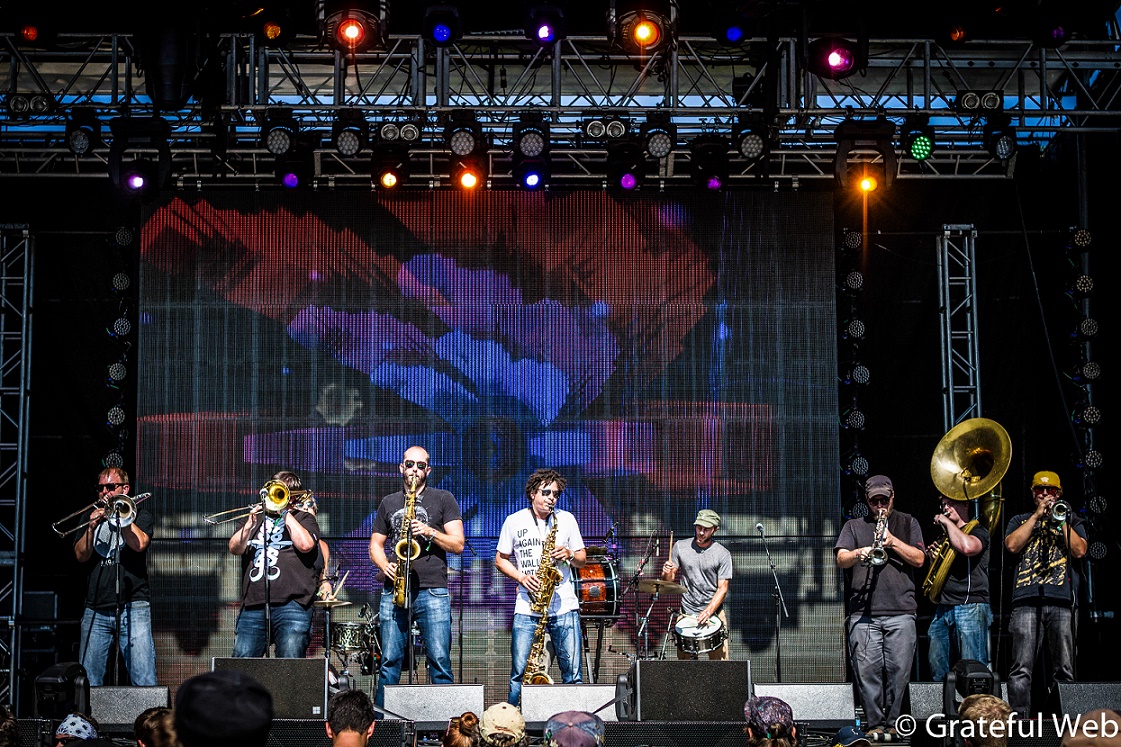 Next up was the Youngblood Brass Band, one of the most original yet traditional (what?) bands of the weekend. What I mean by that is that the nine-piece band – seven of whom play some sort of horn – exhibited virtuosic sensibilities in all sorts of genres one would typically find horns in. These include ska, jazz, funk, New Orleans, Dixieland – you name it. But amidst the pristine horn arrangements was the hip-hop style MC-ing of frontman David Henzie-Skogen. Indeed, the marriage of hip-hop and horns were a bit of a surprise to my ears – even at this festival – but I absolutely loved the energy they brought to the afternoon.
Next up was the Youngblood Brass Band, one of the most original yet traditional (what?) bands of the weekend. What I mean by that is that the nine-piece band – seven of whom play some sort of horn – exhibited virtuosic sensibilities in all sorts of genres one would typically find horns in. These include ska, jazz, funk, New Orleans, Dixieland – you name it. But amidst the pristine horn arrangements was the hip-hop style MC-ing of frontman David Henzie-Skogen. Indeed, the marriage of hip-hop and horns were a bit of a surprise to my ears – even at this festival – but I absolutely loved the energy they brought to the afternoon.
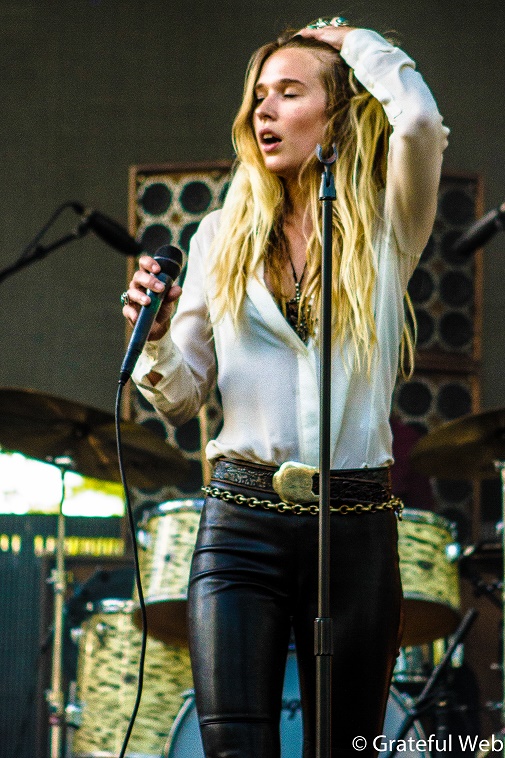 Wild Belle, a group whose masterminds are brother-sister duo Natalie and Elliot Bergman from Chicago, hit the 630 Stage in the mid-afternoon. It was hard to believe that this was the same stage as Porn and Chicken, because Wild Belle probably represents the polar opposite of that. Yet in my opinion, this just serves as a testament to NCMF's status as one of the most eclectic festivals out there. Wild Belle, fronted by Natalie, is a stylized indie-rock outfit that has a glam element, but at its core is strong songwriting. Consisting of drums, bass, keys, guitar and saxophone, the live quintet offered stark, moody songwriting, perhaps inspired by the likes of Leonard Cohen and Patti Smith (though that's just my guess), flanked with a touch of surf guitar meets reggae, as exemplified by their break out track, “Keep You”. Their sense of style, along with their fascinating lyrics, made Wild Belle one of my top five favorite acts of the weekend.
Wild Belle, a group whose masterminds are brother-sister duo Natalie and Elliot Bergman from Chicago, hit the 630 Stage in the mid-afternoon. It was hard to believe that this was the same stage as Porn and Chicken, because Wild Belle probably represents the polar opposite of that. Yet in my opinion, this just serves as a testament to NCMF's status as one of the most eclectic festivals out there. Wild Belle, fronted by Natalie, is a stylized indie-rock outfit that has a glam element, but at its core is strong songwriting. Consisting of drums, bass, keys, guitar and saxophone, the live quintet offered stark, moody songwriting, perhaps inspired by the likes of Leonard Cohen and Patti Smith (though that's just my guess), flanked with a touch of surf guitar meets reggae, as exemplified by their break out track, “Keep You”. Their sense of style, along with their fascinating lyrics, made Wild Belle one of my top five favorite acts of the weekend.
Next up was the only band on the bill that I've seen before, and they're always worth it: Dr. Dog. The Philadelphia-based rock quintet has been hitting the pavement for the better part of ten years, touring with the likes of My Morning Jacket and The Cave Singers. It's hard to find a more polished and tight – yet somehow raw – band anywhere. Their set marked the beginning of the end of the daylight hours, and they played tunes from their most recent record, B-Room, as well as fan favorites like “Shadow People” and “Jackie Wants a Black Eye”. Those unfamiliar with Dr. Dog's material may be swayed toward fanhood by their infectious melodies, classic-rock arranging style, and their subtle tendencies toward the pure coolness of Philly soul.
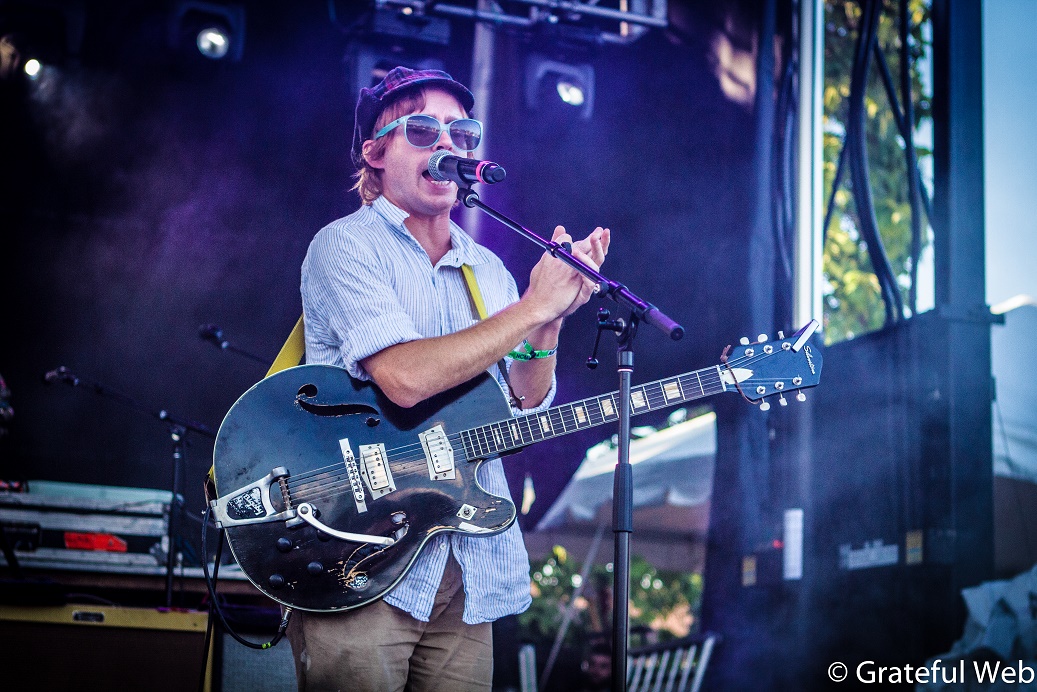 I ended up splitting the time between Dr. Dog and (Snoop) Doggy Dogg between two EDM outfits: Riff Raff and Zeds Dead. These guys had arguably the rowdiest, most endeared fans of the entire weekend. But since EDM isn't normally in my purview, I'll simply give credit where credit is due and congratulate them on a job well done. Moving along...
I ended up splitting the time between Dr. Dog and (Snoop) Doggy Dogg between two EDM outfits: Riff Raff and Zeds Dead. These guys had arguably the rowdiest, most endeared fans of the entire weekend. But since EDM isn't normally in my purview, I'll simply give credit where credit is due and congratulate them on a job well done. Moving along...
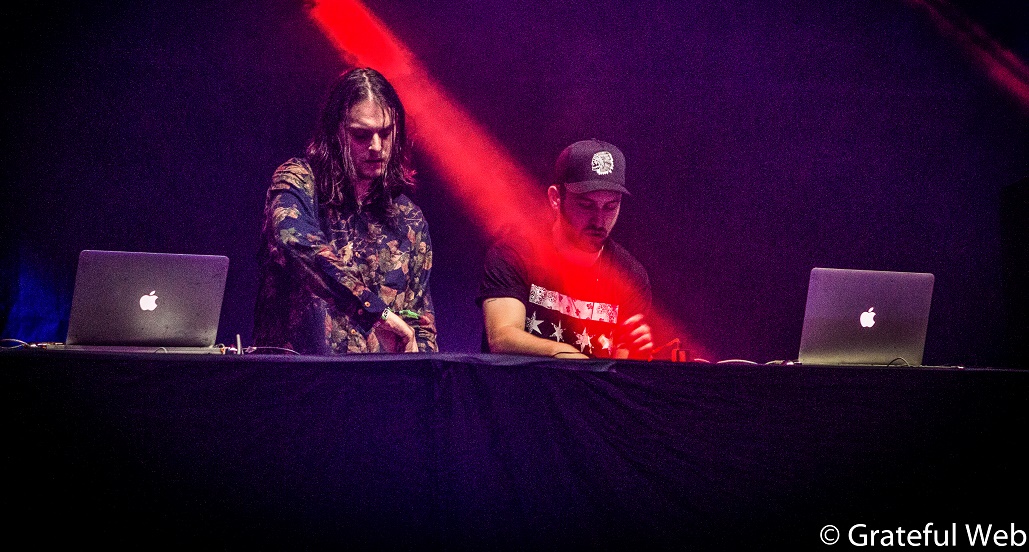 When I found out I'd be covering this festival and started talking about it among friends and family, the most common question I was asked was, “Wait – I thought he was called 'Snoop Lion' now?” This was on my mind as well: he was billed as Snoop Dogg, but I was still under the impression that he was operating under his new, reggae-infused persona. His set definitely shed some light on this. The show began with Snoop Lion insignia on the screen at the back of the stage, and he began the show with that reggae sound. He then returned to the Snoop Dogg many have come to know and love, performing 90's hits I remember from back in the days when MTV played music videos (aka, The Stone Age).
When I found out I'd be covering this festival and started talking about it among friends and family, the most common question I was asked was, “Wait – I thought he was called 'Snoop Lion' now?” This was on my mind as well: he was billed as Snoop Dogg, but I was still under the impression that he was operating under his new, reggae-infused persona. His set definitely shed some light on this. The show began with Snoop Lion insignia on the screen at the back of the stage, and he began the show with that reggae sound. He then returned to the Snoop Dogg many have come to know and love, performing 90's hits I remember from back in the days when MTV played music videos (aka, The Stone Age).
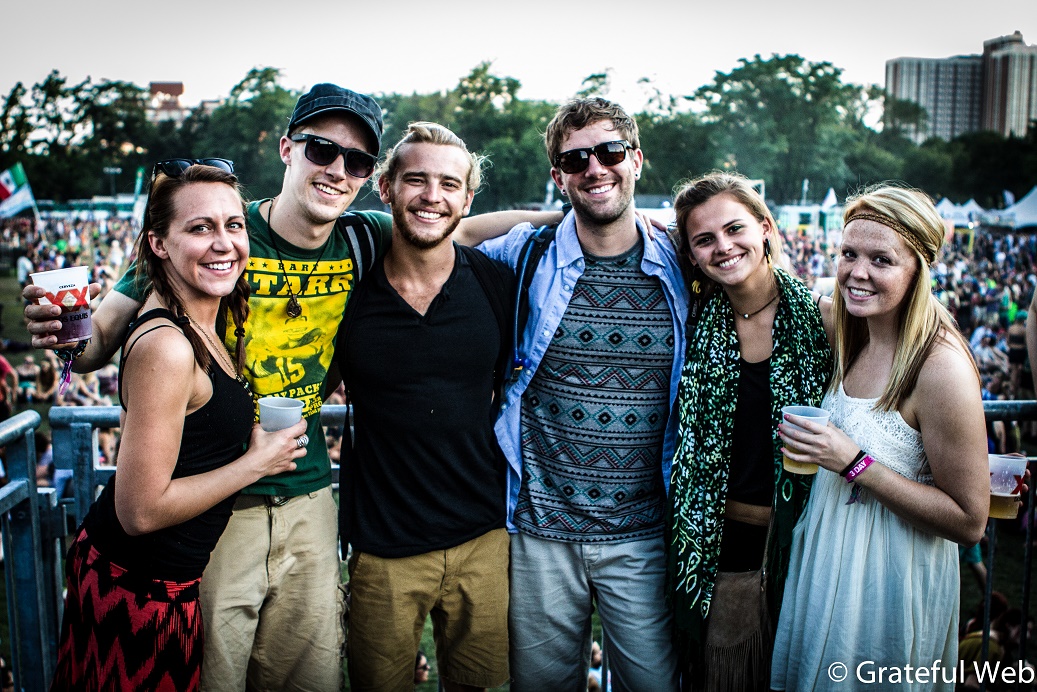 All in all, NCMF was a phenomenal way to spend the ceremonial last weekend of summer.
All in all, NCMF was a phenomenal way to spend the ceremonial last weekend of summer.





